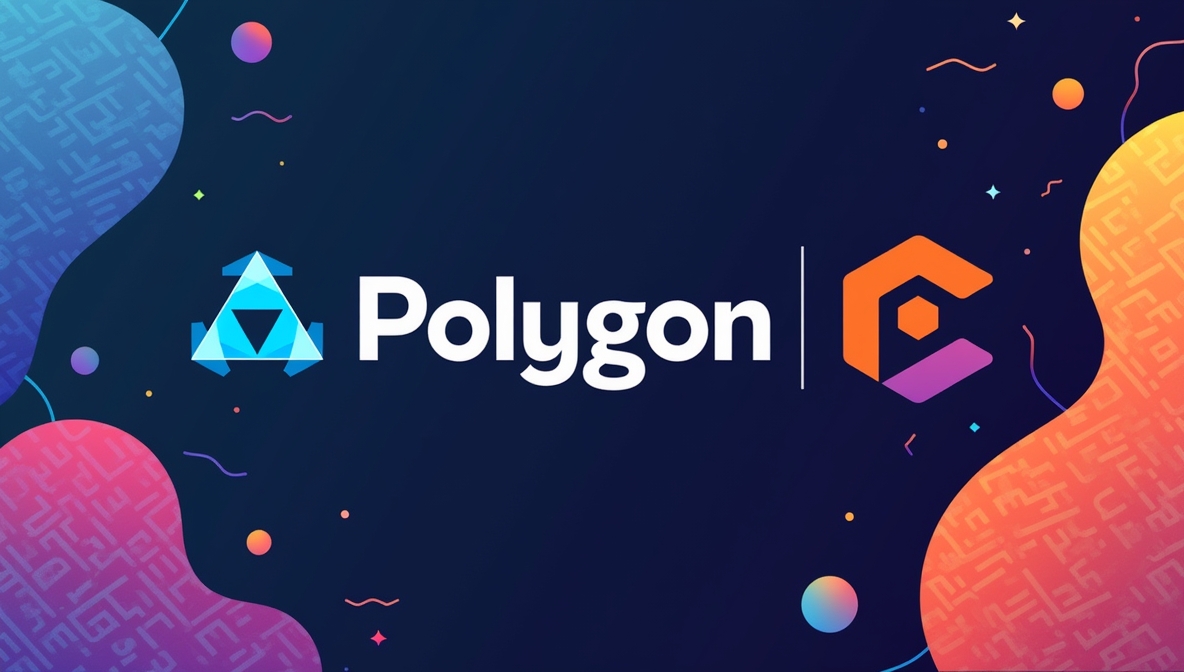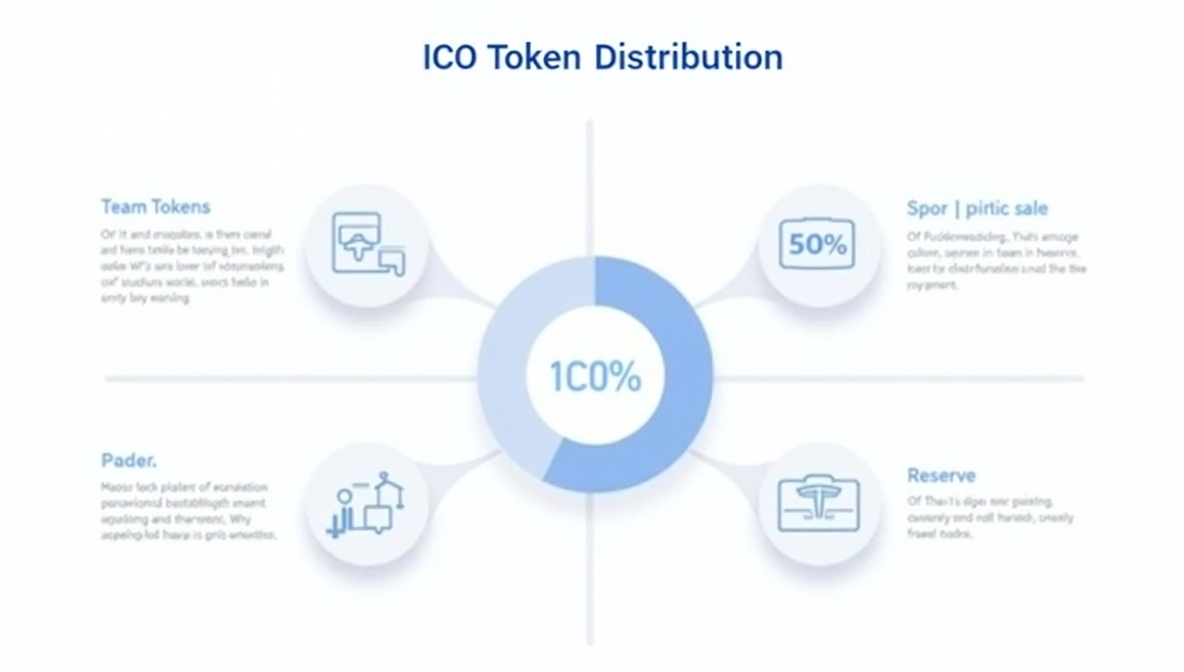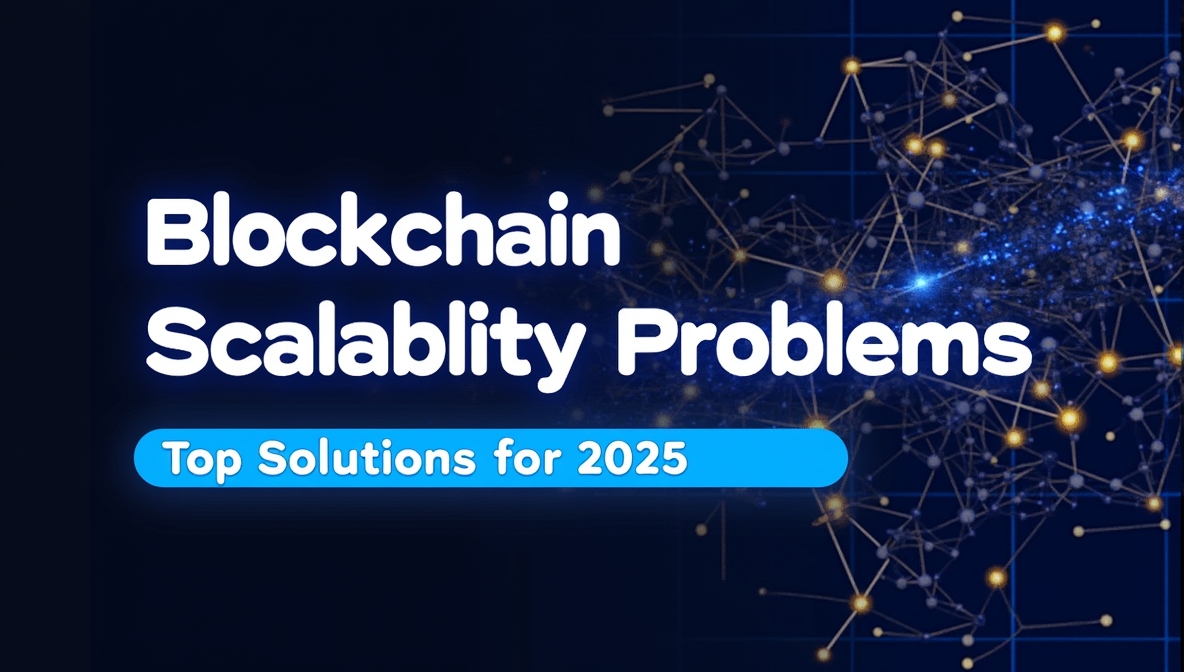In today’s fast-paced digital era, brands are scrambling to adapt as decentralized platforms redefine consumer engagement. Web3 marketing methods are revolutionizing advertising strategies by emphasizing transparency, community involvement, and data sovereignty. This article delves into the innovative tactics transforming digital campaigns in 2025, covering AI-powered personalization, blockchain-backed trust, tokenized incentives, and community-driven marketing. Whether you’re a seasoned marketer or new to decentralized strategies, understanding these trends is essential for staying ahead in an evolving landscape.
The Evolving Web3 Marketing Landscape
The expansion of Web3 marketing has been nothing short of transformative. Initially a niche concept, Web3 has evolved into a multi-billion-dollar ecosystem that’s reshaping digital strategies. With the market currently valued at $6.15 billion—a dramatic increase from $3.2 billion in 2021—and projections reaching $22.57 billion by 2030, brands are rapidly recalibrating their approaches to capture emerging opportunities.
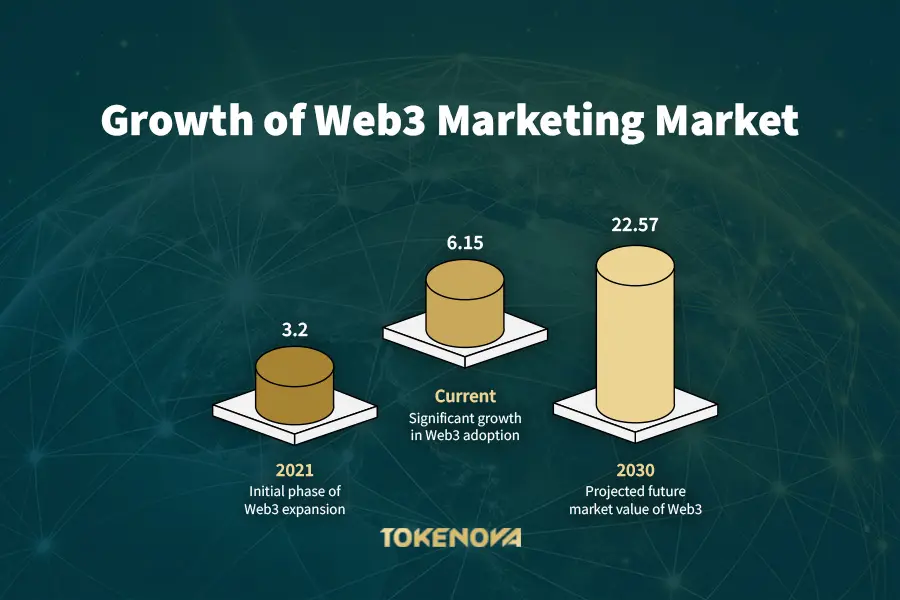
This robust growth is fueled by the wide range of applications within Web3. Finance applications dominate, with nearly 46% integrating blockchain technology, while social and gaming apps contribute 8.9% and 5.7%, respectively. Particularly striking is the explosive growth in blockchain games, which saw an astonishing 2,000% surge within a year. Such statistics underscore the critical need for marketers to harness web3 marketing trends to target these burgeoning segments effectively.
Read More: Web3 Brand Strategy: A Comprehensive Guide
Traditional vs. Web3 Marketing: A Paradigm Shift
Conventional digital marketing relies on centralized platforms where tech giants control user data, often at the expense of transparency and consumer trust. In contrast, Web3’s decentralized nature places power back in the hands of the users, creating a space where community governance and data ownership are paramount.
This shift transforms marketing from an intrusive, data-harvesting exercise into a collaborative, trust-building process. Brands must now focus on creating authentic experiences that invite users to participate and share in the success of the brand. In this environment, the emphasis is on long-term relationship building, where every interaction is transparent, value-driven, and respectful of individual privacy. The move toward web3 marketing compels marketers to develop strategies that are both technically innovative and socially responsible.
Read More: Web3 Privacy: Real Risks & How to Stay Safe
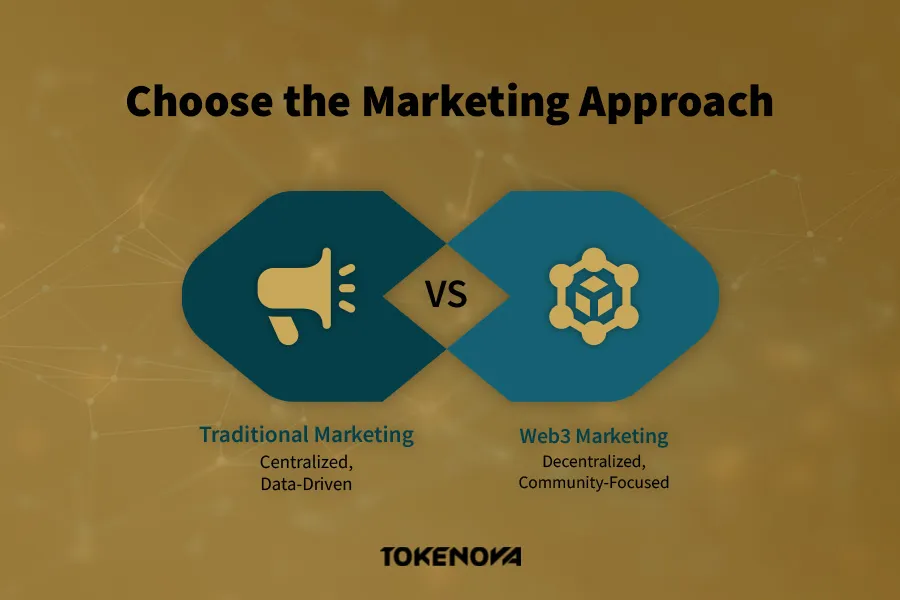
AI Integration in Web3 Marketing
The fusion of artificial intelligence with Web3 technologies is setting new benchmarks in digital marketing. In 2025, AI-generated personalized content is at the heart of web3 marketing trends. Advanced AI systems are now capable of crafting blog posts, social media updates, and video content that are precisely tailored to the preferences of niche communities. These systems analyze user behavior and engagement patterns to produce content that resonates on a personal level, thereby driving deeper connection and loyalty.
AI is also transforming the creation of digital art through collaborations with human creators. AI-powered NFT art is a prime example where algorithms work alongside artists to generate unique visual content. This process not only streamlines production but also opens up novel creative possibilities, allowing brands to produce limited-edition digital collectibles that can be integrated into broader marketing campaigns.
Furthermore, AI facilitates efficient content repurposing across multiple platforms. With the proliferation of decentralized networks, marketers are using AI tools to adapt and optimize content for various channels—ensuring that the core message remains consistent while catering to the unique requirements of each platform.
🔢Trends by Numbers: AI chatbots are expected to handle 25% of all search queries by 2025, indicating a significant shift in how users search for information online.
Chatbot Referrals and AI-Driven Traffic
A growing hallmark of web3 marketing trends is the emergence of AI-powered chatbots as significant traffic drivers. By 2025, chatbots have outpaced traditional search engines as primary sources of web traffic, reflecting a shift in user behavior towards more interactive and conversational experiences.
Modern chatbots are designed to engage users in real time, answering questions, guiding them through product features, and even recommending personalized content. Platforms such as Profound and Perplexity are leading the way by enabling marketers to analyze chatbot performance and optimize conversational strategies. This evolution requires a reevaluation of website architecture; for instance, sites heavy on JavaScript are now transitioning to server-side rendering with solutions like WordPress or Webflow, ensuring that content is accessible to AI crawlers and aligned with conversational search trends.
Additionally, implementing structured data and FAQ schemas has become crucial for enhancing the discoverability of content.
Web3 referral programs, powered by smart contracts and blockchain wallets, significantly reduce fraud and ensure instant, transparent rewards, making them a core growth engine for decentralized projects.
🔢Trends by Numbers: Referral campaigns that use chatbots experience a 21% higher completion rate compared to traditional referral methods. This highlights the effectiveness of chatbots in promoting successful referrals and boosting user conversions. The same source adds that 64% of businesses are now employing referral platforms that integrate chatbots, which reflects a growing trend in adopting automated, conversational referral strategies in digital marketing.
Read More: 10 Game-Changing Uses of Smart Contracts in Blockchain
Blockchain-Backed Transparency and Trust
At the core of web3 marketing is blockchain technology, which underpins a new level of transparency and trust in digital communications. Blockchain provides an immutable record of transactions and interactions, which can be leveraged to verify claims and validate authenticity—a key concern in today’s marketplace.
For example, De Beers’ Tracr platform utilizes blockchain to track the entire journey of diamonds from mine to retail, ensuring verifiable proof of ethical sourcing and authenticity. This level of transparency not only enhances consumer trust but also differentiates brands in competitive markets where authenticity is a critical differentiator.
Beyond luxury goods, blockchain is transforming transparency across various sectors. In supply chains, blockchain enables B2B buyers and consumers to verify the origins and handling of products, combating counterfeiting and ensuring quality. Moreover, blockchain is improving marketing attribution models by providing verifiable data on user interactions. This advancement addresses long-standing issues in marketing analytics, where multiple platforms often obscure the true source of conversions.
Read More: Layer 2 Solutions: Boosting Blockchain Scalability
Tokenization and Incentive-Based Marketing
Tokenization is emerging as one of the most innovative facets of web3 marketing trends. By integrating blockchain-based tokens into campaigns, brands can offer rewards that extend far beyond traditional loyalty programs. Users earn tokens for a variety of actions—whether signing up for a service, making a purchase, or sharing content—and these tokens can be redeemed for exclusive perks, traded on secondary markets, or even converted into other cryptocurrencies.
One standout example is the Brave Browser’s Basic Attention Token (BAT), which rewards users for engaging with ads. BAT campaigns have achieved click-through rates as high as 9%, significantly outperforming the global average of 2% seen in traditional advertising. Token-based systems are not merely about rewards; they create a circular economy where value flows seamlessly between brands and consumers.
Community-Driven Marketing Strategies
At the heart of web3 marketing is the power of community-driven strategies. Unlike traditional marketing, which often treats consumers as passive recipients, Web3 marketing empowers communities to co-create brand value. Platforms like Discord, Telegram, and token-gated communities are critical in facilitating ongoing, authentic interactions between brands and their supporters.
Community-driven marketing is about more than just conversation—it’s about building ecosystems where every member feels valued. Regular interactive sessions such as Ask Me Anything (AMA) events, virtual meet-ups, and collaborative decision-making processes are fundamental to fostering trust and engagement. Moreover, by rewarding community participation with NFTs or tokens, brands not only acknowledge individual contributions but also incentivize deeper involvement.
The success of community-centric strategies is exemplified by companies like Yuga Labs, the creator of the Bored Ape Yacht Club. Here, community engagement is not just an add-on; it is the core of the brand’s value proposition. Members are actively involved in shaping the brand, driving organic growth, and authentic advocacy.
Case Studies in Community-Driven Web3 Marketing
Innovative companies are already reaping the benefits of web3 marketing through successful community-driven initiatives. For example, Welwaze, a medical device company, combined blockchain technology with a community-focused approach to enhance health management. By integrating wearable technology with a mobile app and blockchain verification, Welwaze not only improved health outcomes but also secured significant Series A financing, illustrating the commercial viability of community-driven strategies.
Similarly, Virgin Mobile in Latin America embraced Web3 principles to transform data management and customer interaction. Through a dedicated Web3 innovation sprint, Virgin Mobile developed a decentralized data platform that enhanced customer engagement via a behavioral risk score algorithm. These initiatives underscore how established brands can leverage Web3 marketing to reimagine traditional business models, foster customer trust, and drive sustainable growth.
Such case studies highlight that when brands invest in community-centric initiatives, they not only enhance consumer loyalty but also unlock new revenue streams. The collective participation inherent in these strategies transforms marketing into a collaborative venture, where every user contribution adds measurable value to the ecosystem.
Read More: Top Web3 Business Ideas: Your Launchpad to Success
NFTs and Digital Assets in Marketing
Non-fungible tokens (NFTs) have evolved significantly within web3 marketing trends. No longer confined to digital collectibles, NFTs now serve as powerful tools for creating exclusive, verifiable digital assets that can enhance customer engagement. Brands use NFTs to offer limited-edition content, premium memberships, and unique digital experiences that resonate with their target audiences.
The innovative merger of AI and NFT creation has further expanded the creative possibilities in digital marketing. AI-assisted NFT projects allow artists and brands to collaborate on generating dynamic, one-of-a-kind digital art that appeals to both traditional collectors and digital enthusiasts. This synergy not only elevates the aesthetic appeal of marketing assets but also introduces a new level of interactivity and personalization. NFT drops, airdrops, and on-chain loyalty programs are rapidly being integrated into comprehensive marketing strategies, allowing brands to create gamified and transparent reward systems that incentivize ongoing engagement.
By embedding NFTs into campaigns, brands can cultivate a sense of exclusivity and belonging among consumers. These digital assets act as access keys to special content, events, or services, deepening the relationship between the brand and its community. As such, NFTs are a cornerstone of Web3 marketing trends, turning passive consumers into active participants in the brand story.
🔢Trends by Numbers: The global NFT market is expected to reach $264.6 billion by 2032, up from $27.3 billion in 2023, illustrating the explosive growth of NFTs as marketing tools beyond collectibles, including loyalty programs and exclusive digital experiences.
Personalization in Web3 Marketing
Personalization in the Web3 era has transcended the boundaries of conventional digital marketing. With privacy concerns on the rise and the deprecation of third-party cookies, web3 marketing now focuses on ethical, user-driven personalization strategies. Central to this evolution is the concept of zero-party data, where consumers voluntarily share their preferences and interests, ensuring that personalization is built on trust and consent.
This shift enables brands to create micro-experiences that are hyper-relevant to individual users. By leveraging blockchain verification, token ownership, and real-time on-chain behavior, brands can design personalized interactions that go far beyond mere demographic targeting. For instance, a campaign might deliver distinct content to long-term token holders versus new community members, creating nuanced experiences that are both meaningful and memorable.
AI further refines personalization by analyzing vast amounts of zero-party and on-chain data to craft tailored content narratives. These AI-driven systems are capable of generating custom messages, recommendations, and even interactive storytelling that aligns with individual user journeys. This level of personalization not only drives engagement and retention but also reinforces the ethical standards that are at the core of web3 marketing.
Read More: Tokenization in Data Analytics: Enhancing Security and Analytical Power
Challenges and Future Directions in Web3 Marketing
While the promise of web3 marketing is vast, the transition to a decentralized ecosystem is not without challenges. Data privacy remains a critical concern, with evolving regulations demanding that brands balance personalization with consumer rights. The complexity of the Web3 “tech stack” can also be daunting, as marketers must learn to communicate intricate blockchain concepts in accessible language.
Additionally, the decentralized nature of Web3 means that no single entity controls the narrative. Brands must navigate a fragmented landscape where messaging needs to be flexible and resonate across diverse communities. Ethical issues, such as algorithmic bias in AI-driven personalization, further complicate the picture and require vigilant oversight.
Looking forward, the future of web3 marketing is set to be shaped by the continued convergence of advanced technologies. Innovations in virtual and augmented reality, combined with blockchain and AI, promise to create immersive, interactive experiences that redefine consumer engagement. The rise of decentralized identities and privacy-preserving technologies will further empower users, ensuring that personalization respects their autonomy while still delivering value.
Organizations that can balance these technological advancements with ethical marketing practices will be best positioned to lead in this new era. Embracing experimentation and fostering genuine community relationships will be key to navigating the evolving challenges and unlocking the full potential of web3 marketing trends.
Read More: Challenges In Starting a Web3 Company
Key Takeaways
- Decentralized Transformation: Web3 marketing trends are reshaping traditional advertising by prioritizing decentralization, blockchain transparency, and user participation.
- AI-Driven Personalization: Advanced AI integration enables hyper-personalized content creation, efficient cross-platform repurposing, and innovative digital art collaborations.
- Blockchain for Trust: Blockchain-backed transparency enhances supply chain verification and marketing attribution, building stronger consumer trust.
- Tokenization & Incentives: Token-based marketing rewards user engagement, fosters long-term loyalty, and creates a collaborative value exchange between brands and communities.
- Community-Driven Strategies: Active community involvement is crucial, with platforms like Discord and token-gated channels empowering brands to co-create value with their audiences.
- Future Prospects: Emerging technologies like VR, AR, and decentralized identities promise even more immersive experiences, although challenges around data privacy and ethical practices remain.
Conclusion
Web3 marketing and its trends are fundamentally reshaping the digital landscape by championing decentralization, AI-driven personalization, and blockchain-backed transparency. These strategies create a collaborative ecosystem where consumers actively participate and share in the brand journey. Forward-thinking brands that invest in these innovative, community-centric approaches will be well-equipped to thrive in an increasingly decentralized future.





